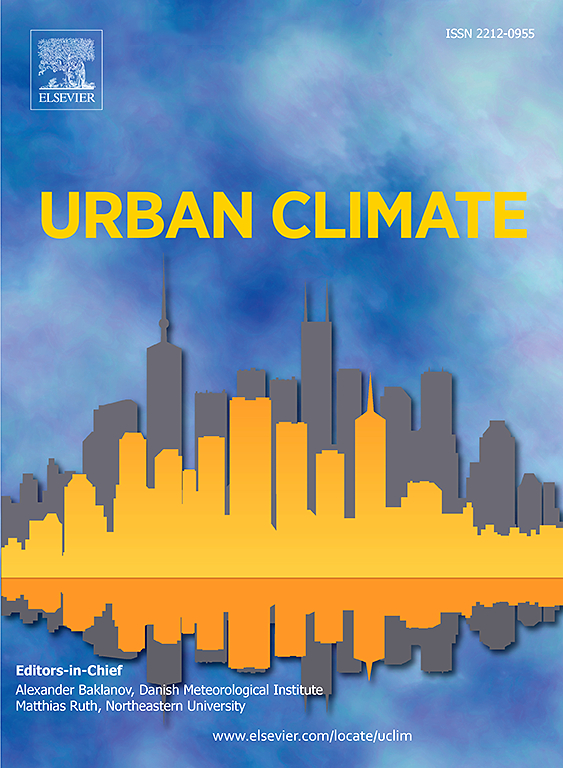Effects of pavement watering on the thermal environment above an impermeable pavement in a hot and humid area
IF 6
2区 工程技术
Q1 ENVIRONMENTAL SCIENCES
引用次数: 0
Abstract
Pavement watering is an effective evaporative cooling strategy for alleviating the heat of pavements, but its effectiveness on impermeable pavements in hot and humid areas needs to be verified. This study both qualitatively and quantitatively investigated the effect of pavement watering on the thermal environment above an impermeable pavement in Guangzhou. The results showed that pavement watering reduced the upward shortwave and longwave radiation, resulting in an increase in net radiation that could be offset by the latent heat (QE) of water evaporation, thereby reducing the surface temperature (Ts), sensible heat and heat storage of the pavement. The reduction in Ts was a significant factor contributing to the improvement of thermal environment parameters. High humidity levels are not favorable for the reduction in Ts and evaporative cooling in hot and humid regions. However, the exponential function between QE and relative humidity (RH) indicated when RH approached 100 %, the QE value could converge to approximately 178 W/m2. Bowen ratio revealed that the pavement was able to imitate a highly evaporative environment by pavement watering. Furthermore, the biometeorological indices in hot and humid area were moderated by the synergistic effect of reduced Ts and increased wind speed, which was benefit from evaporative cooling.
湿热地区路面浇水对不透水路面上方热环境的影响
路面浇水是一种有效的缓解路面热量的蒸发冷却策略,但其对湿热地区不透水路面的有效性有待验证。本文从定性和定量两方面探讨了路面浇水对广州某不透水路面上方热环境的影响。结果表明:铺装浇水减少了向上的短波和长波辐射,导致净辐射增加,而净辐射可以被水蒸发潜热(QE)抵消,从而降低了铺装表面温度(Ts)、感热和储热;Ts的降低是改善热环境参数的重要因素。在湿热地区,高湿不利于Ts的降低和蒸发冷却。然而,QE与相对湿度(RH)之间的指数函数表明,当RH接近100%时,QE值可以收敛到约178 W/m2。Bowen比率揭示了路面能够通过路面浇水来模拟高度蒸发的环境。湿热地区的生物气象指标受到蒸发冷却作用下温度降低和风速增加的协同调节。
本文章由计算机程序翻译,如有差异,请以英文原文为准。
求助全文
约1分钟内获得全文
求助全文
来源期刊

Urban Climate
Social Sciences-Urban Studies
CiteScore
9.70
自引率
9.40%
发文量
286
期刊介绍:
Urban Climate serves the scientific and decision making communities with the publication of research on theory, science and applications relevant to understanding urban climatic conditions and change in relation to their geography and to demographic, socioeconomic, institutional, technological and environmental dynamics and global change. Targeted towards both disciplinary and interdisciplinary audiences, this journal publishes original research papers, comprehensive review articles, book reviews, and short communications on topics including, but not limited to, the following:
Urban meteorology and climate[...]
Urban environmental pollution[...]
Adaptation to global change[...]
Urban economic and social issues[...]
Research Approaches[...]
 求助内容:
求助内容: 应助结果提醒方式:
应助结果提醒方式:


